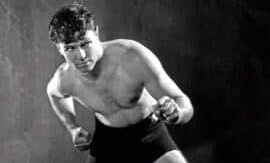
MUI FA JONG, ALSO NAMED MUI FA KUEN, CAN BE TRANSLATED APTLY AS “PLUM FLOWER POSTS”, AND REPRESENTS A GROUP OF FOOTWORK PATTERNS USED AS A BASIS TO FURTHER STRENGTHEN WING CHUN SKILLS.
The name comes from the configuration of the posts, which, when viewed from above, resembles a plum flower—in actual fact, it resembles the plum blossom with five petals “Meyhua”, or “Mui Fa” in Cantonese.
The Mui Fa Jong is considered to be one of the oldest training tools and is practised in many different styles of Gung Fu, however, their configuration and usage are often completely different from the original interpretation, movements and concepts that are commonly seen within the Wing Chun system.
Depending on the Gung Fu style, the “Plum Flower Posts” is known by many different names: “Seven Stars Posts”, “BaGua Posts”, “Five Movements Posts”, or “Nine Moon Palace Posts”. In Wing Chun it is typically known as “Seven Stars Plum Flower Posts”, “Three Stars Posts” or even “Simplified Posts”—even if it is commonly used with a configuration of five posts.
Traditionally, the posts were buried in the ground with a height ranging from between 50 cm to 150 cm and arranged in several different configurations. A small number of people in Hong Kong, such as Grandmaster Ip Man, enhanced the techniques, and since burying the posts into the ground became increasingly difficult, the practice gradually changed, until it became common to simply use an outline that’s on the ground, or of a simplified apparatus that could be easily handled.
When my teacher Sifu Donald Mak learned the Mui Fa Jong from his own Sifu Grandmaster Chow Tze Chuen, he simply drew the layout of the posts on an even flat surface to transfer what he had previously learned from the late Grandmaster Ip Man.
In order to preserve this unique practice method, Sifu Mak designed the layout of the “Plum Flower Posts” on a tool that had real wooden logs: this apparatus consists of five posts, they are approximately 40cm in height and 25cm in diameter, arranged in the pattern of a four-pointed star, with one post sitting in the centre. The posts are fastened to a wooden plank or, instead, securely anchored by means of metal rods.
There is an old saying in the Wing Chun clan: “The Plum Flower method is based on pillars, whether it’s during practise or in a real fight situation”; this is because the footwork of Wing Chun originates from the Chinese plum flower’s geometry, as their shape can be decomposed in a collection of many triangles.
In Wing Chun, the footwork is critical in order to gain the correct angle for attacking and subsequently counter-attacking. Practitioners who are regularly training on the Mui Fa Jong will rapidly gain a more solid understanding of footwork, equilibrium, stance and balance.
It should be noted that a Mui Fa Jong cannot, in itself, teach anything to a Wing Chun practitioner—the posts are only intended to refine and guide the student’s movements, which can clearly be achieved only by moving through all the different aspects of training. Like many other types of equipment, the Mui Fa Jong is just a tool to help the student further polish and correct the techniques he/she has previously learned.
At my school, we practice the Mui Fa Jong in two different ways: either alone or together with a partner. The student will first familiarise himself/herself with the Jong by standing atop the posts, then begin moving and stepping diagonally on the perimeter to develop more confidence.
The student will later add some punches, kicks, body and hand positions to further improve their stability. The increasing complexity of the exercises gives the student a solid structure and a very powerful posture.
The layout of the posts keeps the student consistently moving actively, searching for the best positions, while stepping in all different directions on a given pattern. This is done in a fast but highly structured way, so as to always be in control of the situation.
At the next stage, the students practise Chi Sao on the posts. In this limited space they must try to remain on the posts—the body, hands, footwork, stance, etc. must, therefore, be strictly and expertly applied to subsequently deal with “absorbing and applying” force, in order for the students to reach their full potential by filling in all their gaps, while the training changes in a structured and balanced way.
There is another way of practising on the Mui Fa Jong and it is closely related to the Zhan Zhuang Gong, literally “Standing like a Post”. This is a static Qigong exercise, often practised by students of varying internal Gung Fu styles, commonly known as “Inner Cultivation”.
Maintaining a static posture (for example a Wing Chun kicking position) will stimulate and then strengthen the correct muscle memory, as well as help to overcome the inertia of the internal organs, so that the practitioners may, according to Chinese Medicine, form an improved flow of Qi (Inner Energy). This kind of training is very important to become able to generate Elastic Power, so it can be viewed as an internal exercise to strengthen Qi and body, while also training the external tendons and also strengthening bone and skin.
Master Moy Yat once said that a student practising with a Mui Fa Jong can be compared to a writer that’s using a typewriter. If the writer does not know how to write or spell properly, then by using a typewriter, however proficiently, will produce only nicely formatted characters.



















